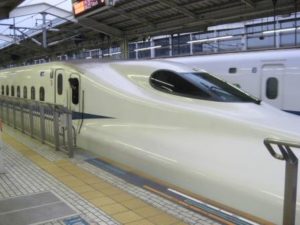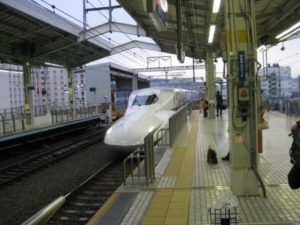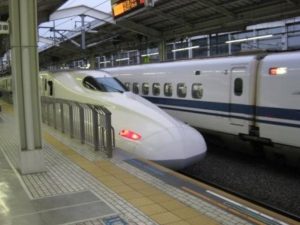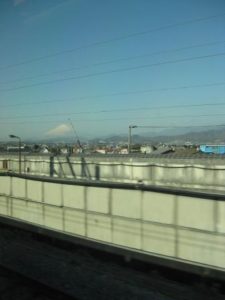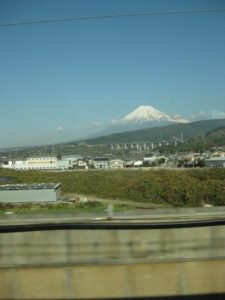Japanese High Speed Trains
01.04.2010 | HMMH |by Lance Meister
I just got back from a trip to Japan, Thailand and Cambodia with one of my good friends. Of all the things we saw and did on the trip, one of the highlights for me was riding the Shinkansen (Japanese high speed train) from Tokyo to Kyoto.
We were already planning to go to Tokyo for a few days, but I have a friend living in Kyoto, and we decided that going to see her would be a great idea, and an excellent excuse to ride the Shinkansen (at least for me).
There’s been a lot of talk about high speed rail in the US, and we even have a version of it in the Acela, but I was blown away by the Japanese system. I’ve ridden high speed trains in Europe, but this was something else entirely.
The highest speed trains on the Tokyo to Kyoto line are the Nozomi Shinkansen, the N700 series. These only stop at a few stations, and are the fastest trains from Tokyo to Kyoto. The trip is 476 km (296 miles) and takes only 2:15! The trains regularly exceed 300 km/hr (186 mph) and average 210km/hr (130 mph), including all stops!
To put that into context, the distance between Boston and Philadelphia is roughly the same as the distance between Tokyo and Kyoto. Based on the Acela timetable, that trip takes 4:52! The Acela exceeds 150 mph (240 km/hr) on two short sections of track and averages 60 mph (98 km/hr), including all stops! And that’s our fastest train. But there is hope that we will have real HSR in this country soon.
While the speed of the Shinkansen was really amazing, that’s not what impressed me the most. What impressed me was the schedule. In the US, and even to an extent in Europe, you decide on the train you are going to take, you buy a ticket and then you make sure you get on that train. For the ride from Tokyo to Kyoto, you just buy a ticket and go to the platform. The Nozomi Shinkansen trains were running every 10 minutes or so! It was like a subway, and not a high speed rail system. It was unbelievable how many trains there were running on the line. And yes, you could set your watch to them.
In Japan, there is a lot of effort at controlling noise from HSR trains. The Japanese take great care in designing the shape of the trains, including the nose, shown in the pictures above, and also in designing the pantograph structure to minimize noise. At high speeds, aerodynamic noise is a significant portion of the noise from the train. The Japanese work very hard at controlling the noise at the source as the primary mitigation measure.
They also utilize noise barriers to reduce the noise generated by the trains, primarily from the wheel/rail interface.
Finally, I’ll leave you with a great travel tip that was given to me. If you take the Shinkansen from Tokyo to Kyoto, be sure to sit on the right side of the train so you can get a view of Mt. Fuji. I’m told that you can only see it about 1 in 10 times due to clouds and fog, but I had a great view of the mountain on the way down. Here’s hoping that this is the decade of HSR in the US!






